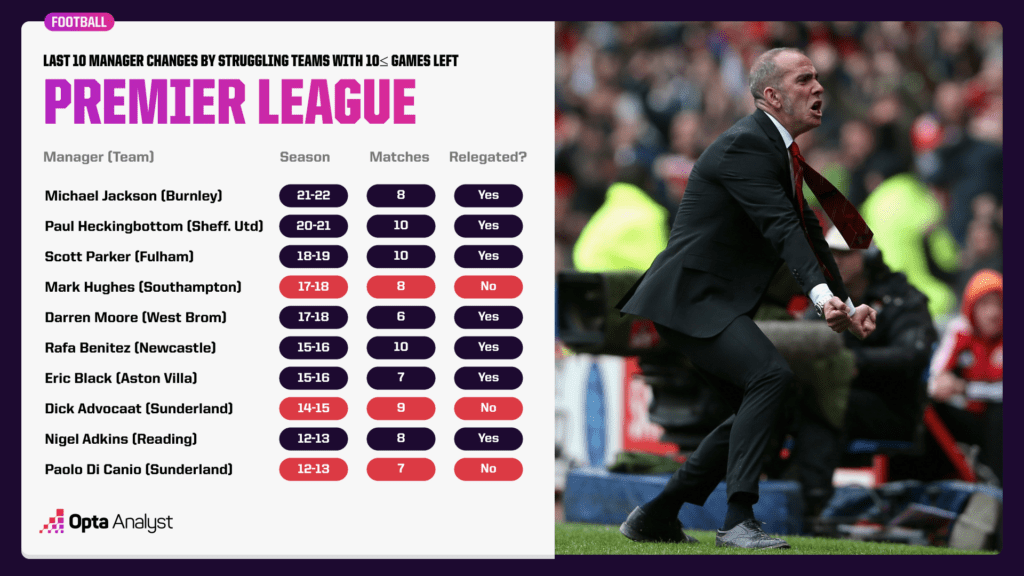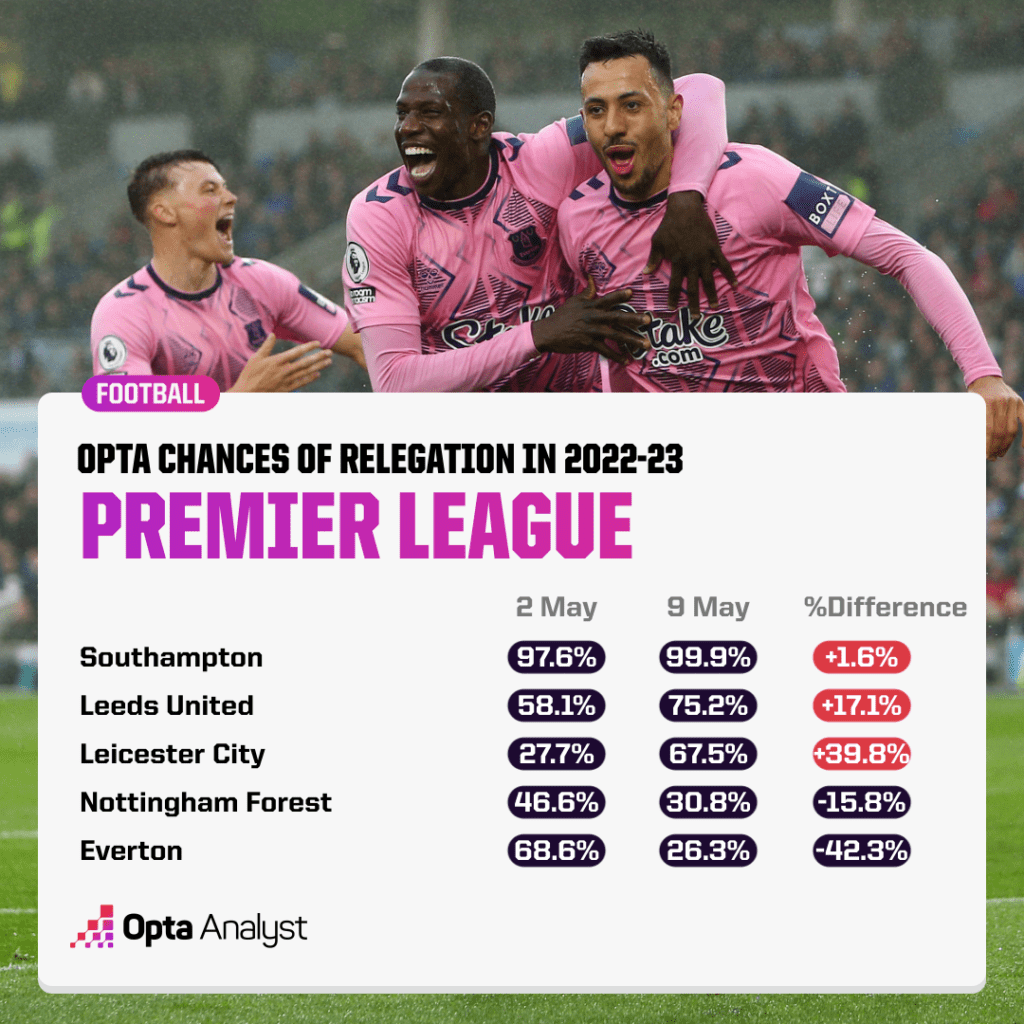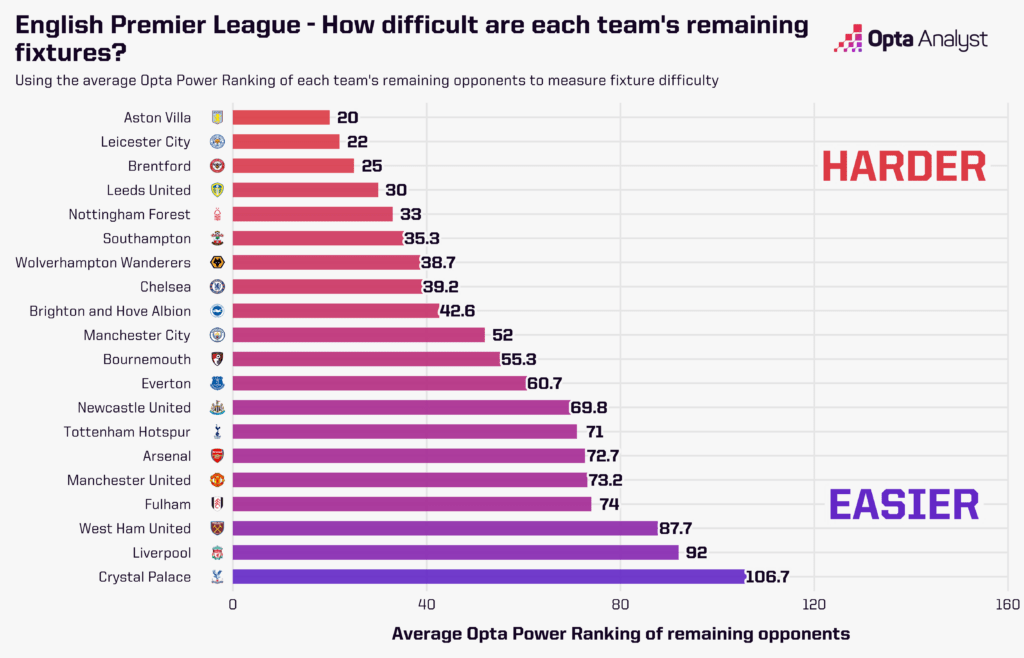With Sam Allardyce given four matches to save Leeds United, we look at how other Premier League teams have fared when replacing their manager amid a relegation battle.
Football managers are more expendable than ever. When Javi Gracia was given the chop by Leeds United last week, he became the 14th Premier League boss to lose his job this season, which is a new record.
But just how important are managers? Of course, getting rid of the bloke in charge is often a Hail Mary by the board when they’ve run out of other ideas or can’t buy additional players to put things right.
Manchester City coach Pep Guardiola thinks the significance of the manager is overstated, saying last September: “It’s not what you have to do, it’s when you have to do it. That’s why football is so difficult…How you have to make the decision, how many times you do it: it only belongs to the players. I’ve said it many times: we, the managers, are overrated in our influence. The game belongs to them [the players].”
When the threat of relegation is looming, replacing the manager is a common response. Sam Allardyce was hired by Leeds last week with four matches to save them from the drop. On the face of it, that doesn’t seem anywhere near long enough to get to grips with the situation and coherently get your ideas across to a team.
Some would argue it’s more a case of getting back to basics and giving players a boot up the backside. Leeds are by no means the first to swap managers ahead of or during the run-in, but how effective are late-season Premier League manager changes?
The Premier League Strugglers
We looked back over the previous 10 instances of relegation-threatened Premier League teams changing their manager with 10 or fewer games left in a season. This took us back as far as the 2012-13 season, and the list includes full-time and interim appointments, but obvious caretaker roles (Hayden Mullins at Watford in 2019-20, for example) and appointments made after relegation was confirmed have been excluded.
Obviously, the aim of all clubs who make such a change so late in the season is to have the so-called ‘new-manager bounce’; a sudden and emphatic up-turn in form that we’ve come to associate with mid-season manager hirings.
But being hired to specifically steer a struggling team away from relegation adds another layer of pressure and stress to the situation, and it’s one few manage to successfully get out of.
Of the 10 instances identified, only three late-season hires have managed to guide their respective teams to Premier League safety.

In the 2012-13 season, Paolo Di Canio had seven games to save Sunderland, and he succeeded. Two years later, at the same club, Dick Advocaat repeated the feat after being hired with nine matches left. Then, in 2017-18, Mark Hughes was brought in for Southampton’s final eight fixtures of the campaign and managed to keep them up.
Over the 10 years in question and prior to Allardyce, the latest managerial change by a team battling relegation was West Brom in 2017-18. Tony Pulis started the season in charge, but he was replaced in November 2017 by Alan Pardew, who in turn only lasted until April. Darren Moore stepped into the void with the Baggies rock-bottom heading into the last six games of the season.
That was ultimately where they finished, five points adrift of safety, but Moore won plenty of credit for how they battled. He oversaw defeats of Manchester United (at Old Trafford) and Tottenham Hotspur, and they held Liverpool to a 2-2 draw at the Hawthorns. His only loss came on the final day of the season at Crystal Palace when their relegation had already been confirmed.
Moore averaged 1.8 points per game, the most of the 10 managers who qualified for the study. Remember the time Michael Jackson tried to save Burnley? Well, his 1.4 points per game was the second most in our list, although still insufficient as the Clarets dropped to the second tier.
The worst points per game record belongs to Eric Black, who Aston Villa appointed as interim manager in March 2016 to see them through to the end of the 2015-16 campaign. He managed just one point from seven matches at the helm, or 0.14 per game, with the Villans eventually finishing a whopping 22 points from safety.
In fact, Black was one of only two of the 10 managers in question who failed to record a points-per-game improvement compared to the rest of the season, with Villa previously averaging 0.5. The other manager was Nigel Adkins, who was in charge of Reading’s last eight games in the 2012-13 campaign – he averaged 0.6 points, with the Royals having been at 0.8 prior to his arrival. They finished second-bottom.
The Premier League Survivors
The common denominator for teams who managed to stay up following late-season appointments was that all three were above the relegation zone when the new manager was confirmed. Sunderland were 16th and 17th respectively when Di Canio and Advocaat were hired, while Southampton were also 17th at the time Hughes arrived.
Leeds will hope that’s a good omen. Allardyce was also brought in with the club sat 17th in the table, above the bottom three on goal difference.
Di Canio’s Sunderland ended up three points clear of Wigan Athletic in 18th, owing much to back-to-back wins in mid-April. In his second game at the helm, the Black Cats beat bitter rivals Newcastle United – who were also in a bit of trouble – 3-0 at St James’ Park, and they followed that up with a 1-0 win over Everton at the Stadium of Light.
A 6-1 hammering at Aston Villa dented morale, but another couple of home draws – against Stoke City and Southampton – ensured Sunderland staved off the threat of relegation.
They then did it again a couple of years later. Gus Poyet reached the end of the road in March 2015 after beginning the year with one league win in 10 league games, leading to Advocaat’s appointment.
Much like Di Canio, Advocaat presided over a defeat of Newcastle in just his second match, a 1-0 victory secured by Jermain Defoe’s stunning long-range volley at the Stadium of Light. That was followed by a 4-1 home loss to Crystal Palace, but then came a five-game unbeaten run that meant losing 3-1 to Chelsea on the final day was irrelevant.
A 0-0 draw away to Arsenal on the penultimate matchday secured their Premier League status for another year, with Advocaat moved to tears at the end of that match.
There wasn’t quite the same show of emotion from Hughes when he helped Southampton stay up in 2018, but deep down he must’ve been incredibly relieved – shocked, even – given how poorly his reign started.
Hughes began with three defeats on the trot, conceding three times in each game. West Ham won 3-0, then Saints lost 3-2 to Arsenal and Chelsea, even relinquishing a two-goal lead against the Blues.
But then came a run of four games without defeat, including victories over Bournemouth and Swansea City, the second practically confirming survival ahead of the visit of newly crowned champions Manchester City on the last day of the season.
Leeds’ Outlook
Allardyce spoke a big game about the like of Guardiola, Jurgen Klopp and Mikel Arteta being no better than him during his first press conference as Leeds boss last week.
They were the bold claims of a man clearly not lacking in self-belief, and don’t expect that confidence to diminish if he does go on to save Leeds.

To be honest, if he manages it, fair play. While they may not be the relegation near-certainties that Southampton are, with Saints given a 0.1% chance of survival, results over the weekend made Leeds’ outlook bleaker.
Obviously, losing 2-1 at Man City wasn’t exactly surprising. Actually, that scoreline probably defied the expectations of even some of the most optimistic supporters.
But with Nottingham Forest beating Southampton to all but put Saints down and Everton astonishingly thrashing Brighton 5-1 at the Amex Stadium, Leeds dropped to 19th. Subsequently, their chances of relegation increased by 17.1% to 75.2%. That makes them second favourites to drop into the Championship.

They’ve also got a tricky final three games. The average Opta Power Ranking of their remaining three opponents (Newcastle United, West Ham and Tottenham Hotspur) is 30, making their run-in the fourth hardest of all 20 Premier League teams.
The caveat in that respect is four of the bottom five are among the teams with the six hardest run-ins according to the average Opta ranking of opponents. Leicester have the most difficult end to the season (average ranking: 22), Forest’s (33) is deemed only slightly easier than Leeds’, and Southampton’s is 35.3. The supercomputer considers Everton (60.7) clear favourites to break clear of the bottom three.
With Leeds, if they do go down, it’s not even that they can really be accused of acting too late with regards to sacking Gracia – he only had a couple of months in charge, so if anything the criticism that’ll likely be aimed at them is that the Spaniard was a strange choice in the first place.
For Allardyce, taking the job on was a no-brainer because it’ll be easy enough for him to claim they were already well on their way to relegation before he was hired. If he keeps them up, he’ll have achieved something few thought he could.
Either way, as Guardiola suggested, the outcome now is effectively down to the players after the Leeds hierarchy’s final roll of the dice.
Enjoy this? Subscribe to our mailing list to receive exclusive weekly content. And follow us on Twitter too.
